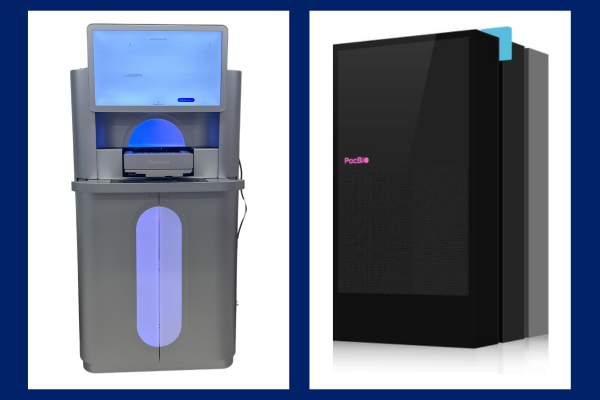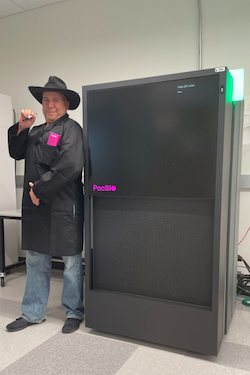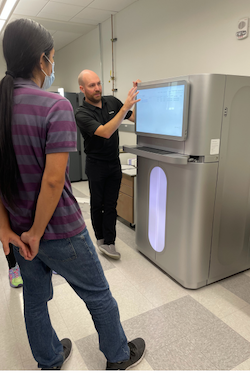The Long and the Short of It: New sequencing capabilities in the Sequencing & Genomic Technologies Core Facility

The Sequencing and Genomic Technologies (SGT) core facility has added two new sequencers to the lab: the PacBio Revio long-read sequencer and the Illumina NovaSeq X Plus short-read sequencer.

The Revio, nicknamed “Barb” after Nobel laureate Barb McClintock, provides long-read sequencing that is highly accurate, scalable, and affordable. For $1,000, plus the cost of labor, the Revio can provide contiguous reads of an entire human genome.
This new sequencer will allow researchers to look at less accessible parts of the genome, like repetitive regions, structural variants, and haplotype phasing. It is also the perfect complement to the Oxford Nanopore GridION, which can provide reads that help map the genome. The Revio provides highly accurate long reads (HiFi) to fill in the gaps of the map.
SGT is the only academic core facility in North Carolina with a PacBio Revio.

The Illumina NovaSeq X Plus short-read sequencer, nicknamed “Rosie” after British chemist and X-ray crystallographer Rosalind Franklin, does more for half the cost, providing faster and higher capacity runs than its predecessor,4 A the NovaSeq 6000. Instead of the previous standard of completing 48 human genomes in 48 hours (30x coverage), the X Plus can run 128 genomes in the same time.
The X Plus is especially useful for cancer research and those who need ultra-deep sequencing to look for rarer mutations.
In addition to the two new sequencers, SGT is also now providing basic bioinformatic analysis and support for short read sequencing. They are currently building capabilities to be able to provide bioinformatic analysis and support for long-read sequencing as well.
For questions or to learn more, contact sequencing@duke.edu.